
Students will use a model of the solar system to demonstrate the barycenter that exists between the earth and the sun.
- Subject:
- Earth Science
- Science
- Material Type:
- Activity/Lab
- Author:
- William Allred
- Carrie Robledo
- Date Added:
- 05/19/2021

Students will use a model of the solar system to demonstrate the barycenter that exists between the earth and the sun.

Students will use a model of the solar system to demonstrate rotation, revolution, kepler’s laws, Newton's laws, precession, nutation, seasons or tides.
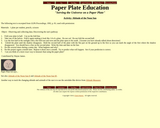
Students use a folded paper plate to mark the angles of shadows on a sunny day. They will measure the angle at several times during the day. The process can be repeated each month to gather more data and reinforce concepts.

This lesson will help students visualize barycenter and the relationship between the sun and the earth. Students will use a solar system model to demonstrate barycenter and see the effects of adding other planets into the mix.
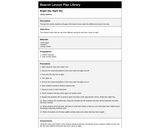
In this activity, students will make observations and understand that the sky looks different during the day than it does at night.

This resource provides background information on how a sundial works and includes directions for making a basic paper sundial.
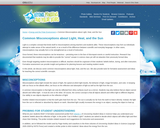
This article lists common misconceptions about light, heat, and the sun. It provides formative assessment probes and information about teaching for conceptual change.
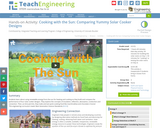
Students learn about using renewable energy from the Sun for heating and cooking as they build and compare the performance of four solar cooker designs. They explore the concepts of insulation, reflection, absorption, conduction and convection.
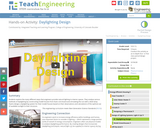
Students explore the many different ways that engineers provide natural lighting to interior spaces. They analyze various methods of daylighting by constructing model houses from foam core board and simulating the sun with a desk lamp. Teams design a daylighting system for their model houses based on their observations and calculations of the optimal use of available sunlight to their structure.

In this lesson, students will compare temperatures of soil and water in and out of the sun, and recognize that the sun heats the land and water.
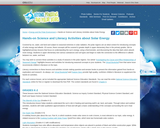
This article features science lesson plans to teach elementary students about the sun's energy, the relationship between light and heat, albedo, and the absorption of different surfaces. National standards and literacy integrations are provided for each lesson.
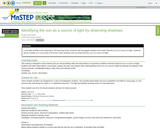
In this lesson students will investigate shadows and realize that the sun is a source of light. Students will make observations and record their understanding in their science journals.
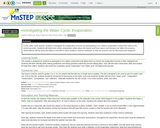
In this water cycle activity, students investigate the evaporation process by participating in an outdoor evaporation experiment held on the school grounds. Students will determine where evaporation takes place the fastest and how nature and humans can affect the process. Observations will be done and data is recorded in each student's science notebook so that the process can be discussed and analyzed.
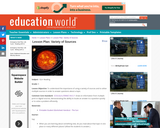
This lesson shows students the value of using multiple sources to gather information, using the topic of the Sun.
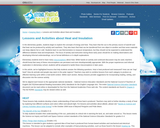
This article highlights lessons and activities for elementary students about heat, insulation, and how animals and people stay warm in cold environments.
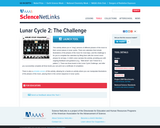
In this interactive resource, students will click and drag pictures of different phases of the moon to complete a calendar of lunar cycles. Narration in the interactive provides ongoing feedback and guidance to the students as they work to complete the patterns. There is also a printable version of this activity, allowing for a hands-on activity where students can physically manipulate illustrations of the phases of the moon, placing them in the correct sequence in lunar cycles.

This is lesson one of the unit Weather Trackers (http://www.beaconlearningcenter.com/unitplan/11468.htm). Students learn by observation and hands-on activities the act of water changing state from a solid to a liquid to a gas.

This simulation explores the sun/Earth connection. It allows variables to be manipulated such as time of year, latitude, angle, annalema, and declination, in teaching seasons.
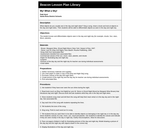
In this lesson, students will review what objects are found in the day and night skies through text, images, discussion, and an interactive song. Students will verbally identify objects in each sky as assessment.

This interactive shows the position of the sun, relative to Earth, as it moves through space.